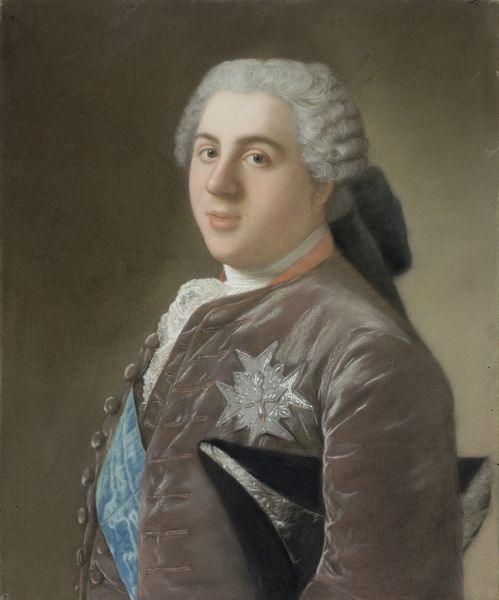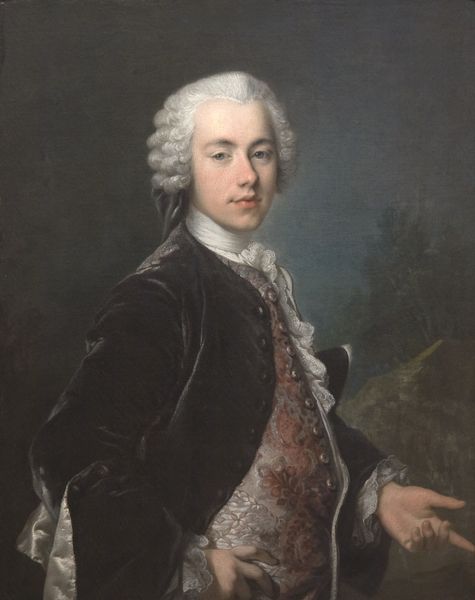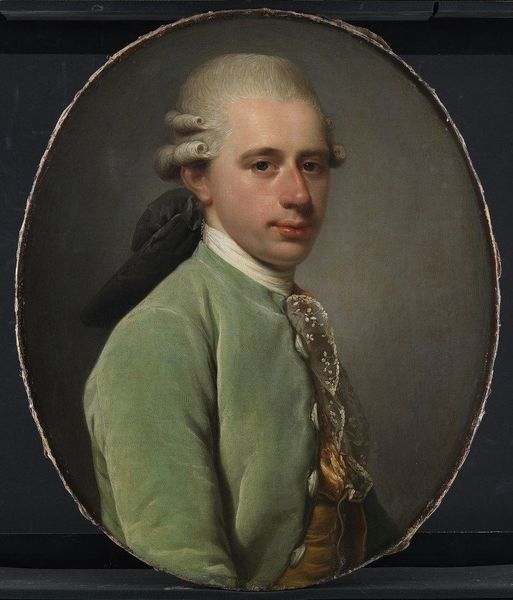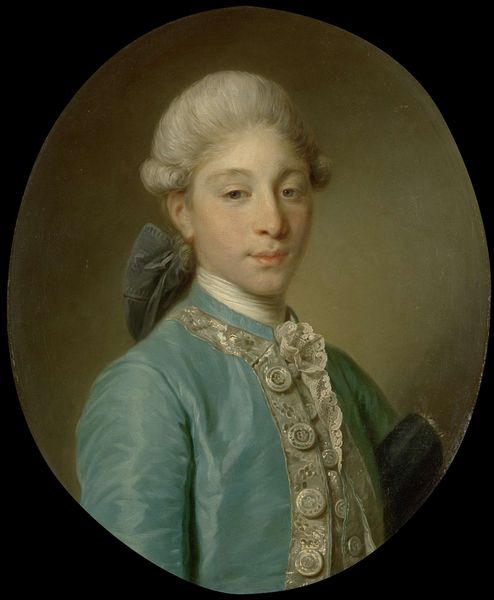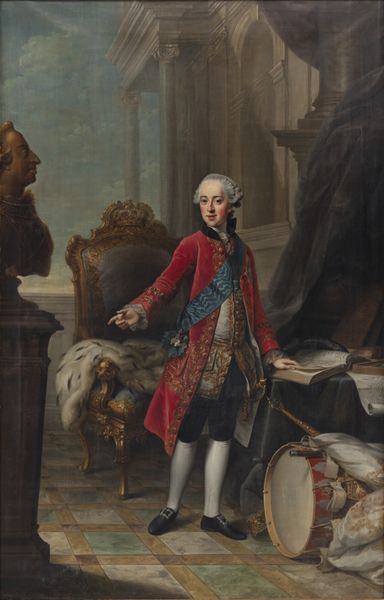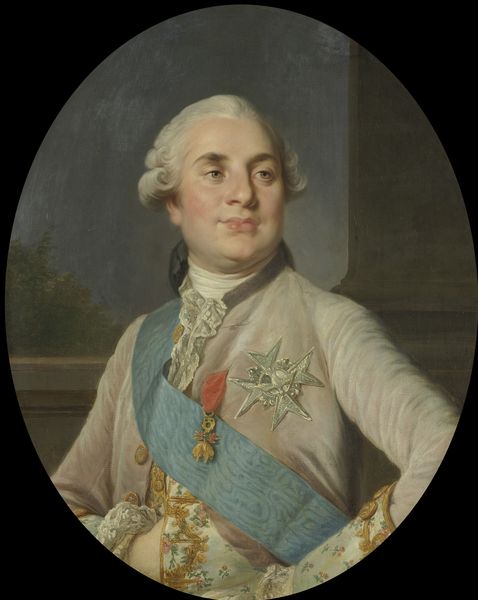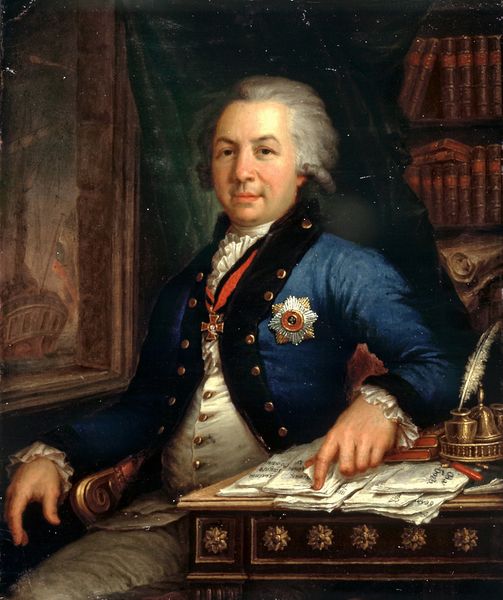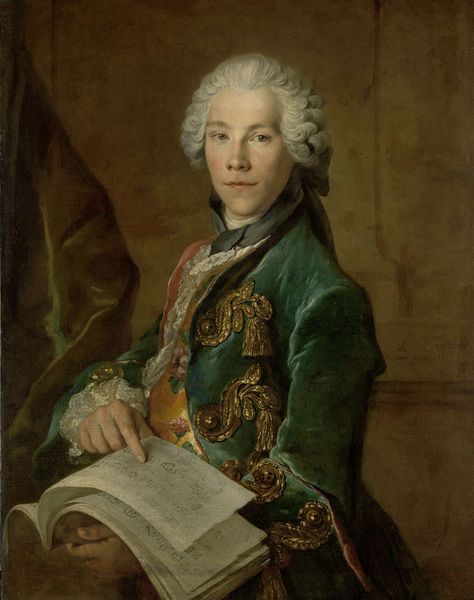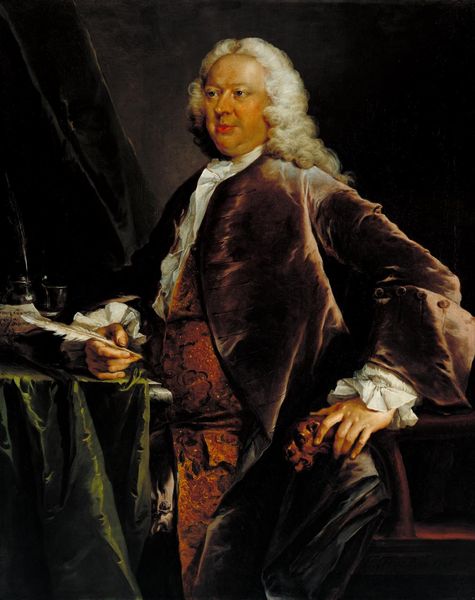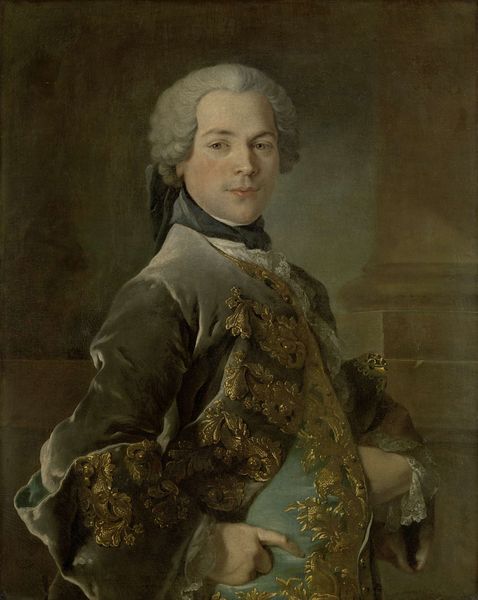
Copyright: Public domain
Editor: This is Joseph Duplessis's "Portrait of a Gentleman," possibly Jean-Baptiste-Francois Dupré, painted in 1782. It's oil on canvas, and at first glance, I see a poised and rather affluent gentleman. What do you see in this piece that stands out beyond the immediate impression? Curator: Beyond the immediate impression of wealth and poise, I see a potent intersection of class, identity, and representation during a pivotal moment in French history. This portrait, rendered in the Rococo style, encapsulates the aesthetics of the elite, yet also foreshadows the imminent social and political upheavals of the French Revolution. Notice the deliberate staging - the man is actively writing, engaged in intellectual activity. But, who had access to literacy and the ability to shape narratives at the time? Editor: It's true; only the privileged. Does the painting perhaps critique this exclusivity, or is it complicit in glorifying it? Curator: I think it's a bit of both, actually. It’s complicit because it immortalizes a member of the elite, showcasing his status through clothing, posture, and accoutrements. However, by freezing him in time just years before the Revolution, it also unwittingly captures a society on the brink. This individual, embodying a certain social order, will soon be confronted by revolutionary forces challenging his very existence. Consider the gaze—does it project confidence or a veiled anxiety about the future? Editor: I see your point. It’s not just a celebration but almost an accidental premonition. The Rococo style itself, so ornate and decadent, seems to be teetering on the edge of its own obsolescence. I hadn't thought about how art serves as a cultural mirror, reflecting anxieties about gender, race, and social class as they were experienced at the time. Curator: Exactly! This portrait isn’t just an aesthetic object; it’s a historical document loaded with social and political implications. It reminds us to question who gets represented, how, and to what end. And, what do you think are the long-term effects of art produced under elite conditions and showcasing a lifestyle of the ruling class? Editor: Thanks, that offers so much to consider. Looking at art through the lens of cultural power and shifting social structures offers such great insights.
Comments
No comments
Be the first to comment and join the conversation on the ultimate creative platform.

